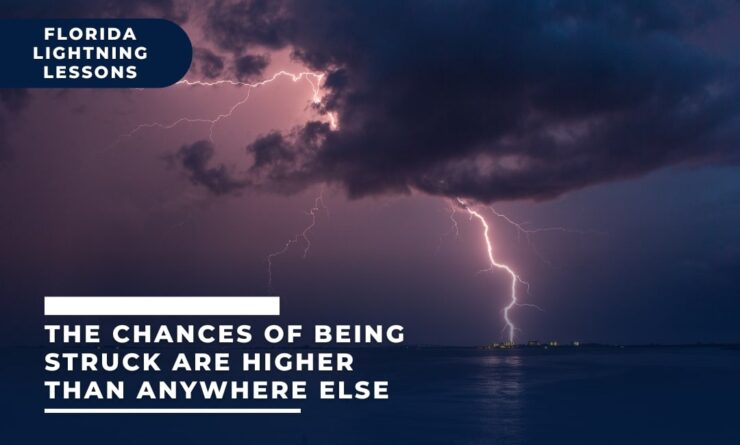Flashing skies and dancing streaks of light illuminate the summer heavens in Florida, adding a touch of divine drama to the landscape. Florida, often called the ‘Lightning Capital of the World,’ becomes a canvas for these spectacular shows, especially during summer and fall.
Yet, this natural spectacle, beautiful as it may be, has a deadly side too. Since 2006, Florida has seen 85 fatalities due to lightning strikes, making it the leader in lightning-related deaths, according to USA Today. Texas follows closely behind.
As the rainy season unfolds this June, the number of lightning strikes will surge, raising the risk of injuries or fatalities. Basic safety protocols are essential to navigate this electrifying landscape.
An Electrifying Toll: Lightning Deaths in 2024
Tragedy struck in the electrifying panorama of 2024 when a lightning bolt claimed its first victim on April 16. The fateful strike ended the life of Peter Strong, a 39-year-old boating in Brevard County. Data from the National Lightning Safety Council (NLSC) confirm five deaths in 2024 in the U.S. due to this relentless force of nature.
Matthew Boggs, 34, met with a tragic end when a bolt struck him as he walked home with his sons from the school bus stop in Valley Mills, Texas, on May 15.
The aftermath was grim as his 6-year-old son, Grayson, who had been holding Matthew’s hand during the incident, succumbed to his injuries on June 16. The year also saw a death in Chester County, Pennsylvania, where lightning was the prime suspect.
From Curiosity to Safety: Ten Lightning Facts You Should Know
In an effort to demystify this potent natural phenomenon, here are ten frequently asked questions about lightning, answered with information from the NLSC and the National Weather Service.
1. What Are Your Chances of Being Struck?
The NLSC emphasizes that the odds of being a victim hinge on behavior during thunderstorms. If you seek shelter promptly, the risk drops dramatically.
However, those who underestimate the threat or engage in risky behaviors during storms are more susceptible to strikes. The impact of lightning extends beyond the individual to their family and loved ones, with potential for lifelong injuries and extensive financial implications.
2. Caught Outside in a Storm?
If there is no indoor shelter available during a lightning storm, the only truly safe action is to find shelter in a safe building or vehicle.
Here are some safety tips: avoid open fields, hilltops, tall isolated trees, or objects, and stay clear from water, wet items, and metal objects. When camping, choose low-lying areas. If you’re in a group, keep distance between members to prevent electrical current from traveling between individuals.
3. Lightning: Hotter Than the Sun?
Despite the common belief, lightning, being the movement of electrical charges, doesn’t have a temperature. However, the air through which it passes can reach up to 50,000 degrees Fahrenheit, five times hotter than the surface of the sun.
4. Do Fish Survive Lightning Strikes?
Most fish survive because they swim below the water surface where the lightning discharge is not potent. However, it’s crucial to avoid swimming or boating during a thunderstorm due to the risk involved.
5. Airplanes and Lightning
On average, commercial planes are struck by lightning once or twice a year, but they are designed to conduct the currents safely. However, smaller private and experimental aircraft lack such protections, increasing the risk.
6. The Power of Lightning
A typical lightning flash is about 300 million Volts and about 30,000 Amps, massively outperforming household current which is 120 Volts and 15 Amps.
7. Is Heat Lightning Real?
The term ‘heat lightning‘ is used to describe lightning from a distant thunderstorm just too far away to see the actual cloud-to-ground flash or hear the accompanying thunder. It’s not a unique type of lightning, rather it’s the light produced by a distant thunderstorm.
8. The Crouching Myth
Crouching outdoors doesn’t make you safer during a lightning storm. The National Weather Service advises seeking shelter in a substantial building or hard-topped vehicle.
9. Lightning Victim Safety
Touching a lightning victim to give them first aid is perfectly safe, as the human body doesn’t store electricity. But remember, the lightning threat remains, so move yourself and the victim to a safer location as soon as possible.
Source:
https://www.yahoo.com/news/lightning-lessons-florida-chances-being-112231104.html
















